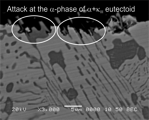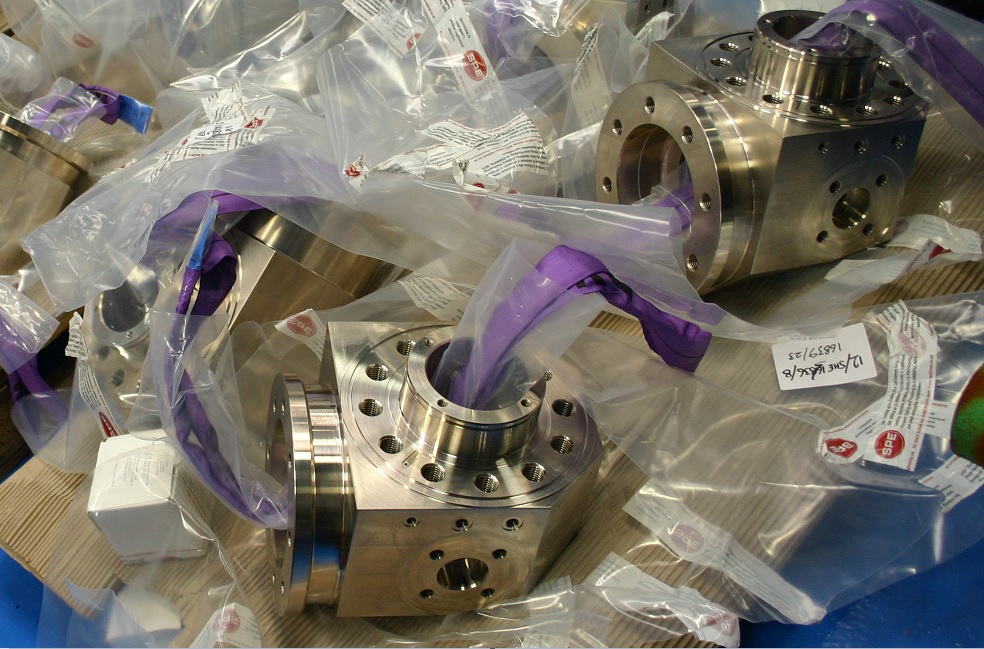Problem: no material specification meets requirements
Often customers cannot find an alloy within existing national and international material specifications that performs as well as expected. This means they have to compromise, thus adversely affecting their products and services.
Solution: speak to Copper Alloys
Copper Alloys are experts in making metals with the best possible combinations of properties. Our in-depth metallurgical knowledge and the ability to skilfully control melting, alloying, casting and down-stream processing allows us to manipulate both mechanical and physical properties to suit a specific application.
The line between enhancing an existing material specification and developing a new material grade altogether gets blurred, however the same underpinning expertise applies to both. We gain an understanding of the application-challenges and use our metallurgical expertise to create a solution. This is achieved ultimately by:
- Composition control in our own modern melting operation. We can manipulate and target an alloys composition for a specific outcome
- Control of casting and Solidification of the alloy improving structure and soundness
- Hot & warm forming operations such as forging, extrusion & rolling to refine structure and properties
- Heat Treatment to further manipulate structure and both mechanical and physical properties
Typical benefits in metal made by Copper Alloys to existing material specifications:
- Increased Proof Stress / yield strength
- Increased Tensile Strength
- Increased / reduced hardness
- Improved ductility and cold formability
- Reduced grain size
- Improved corrosion resistance
- Improved component life and performance
- Improved product quality and reliability
Client benefits of alloy development:
- Improved component longevity
- Lead-free corrosion resistant alloys with anti-galling and a low coefficient of friction against austenitic stainless steel
- Reduction in relative magnetic permeability
- Improved impact strength
- Improved product quality and reliability
- Improved corrosion resistance e.g. the elimination of secondary phases in the structure thus eliminating selective phase corrosion (SPC) in seawater applications
- Alloys of high thermal conductivity combined with resistance to seawater corrosion and high mechanical strength. This combination of properties is difficult since these are opposing requirements
Many of the 200+ alloys we manufacture have been developed to provide our customers with performance solutions previously unavailable.
Lead free anti-galling alloy with high corrosion resistance. This alloy has insoluble elements which are soft and positively influence the boundary film in food-safe bearing applications.
Fracture surface of CAL T-1000 alloy showing sub-micron size precipitates which dramatically increase strength and hardness over conventional cupro nickel alloys retaining excellent sea water corrosion resistance.
CAL Wrought CNC: Single phased wrought structure having fine equi-axed grains with no anodic secondary phases, resulting in outstanding seawater corrosion resistance, high strength and extreme toughness.
Heavy-Section wrought Austenitic Stainless Steel microstructure – fine uniform equiaxed austenite grains showing strain lines indicative of significant strain hardening. This material has an incredibly high Rp0.01 Proof Stress.
Nickel-Copper alloy containing Aluminium, Manganese, Iron and Carbon processed and heat treated to eliminate hard particles yet retaining a super-fine grain size. Application: acoustic foils 20µ thin, where gamma prime and carbide particles would adversely interfere with the application.












 United Kingdom
United Kingdom